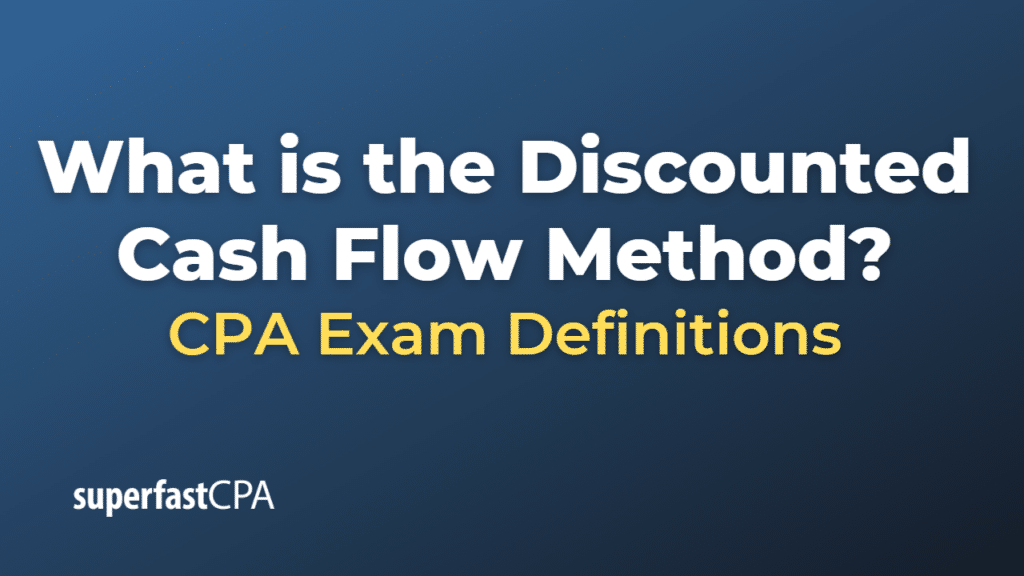Discounted Cash Flow Method
The Discounted Cash Flow (DCF) method is a valuation technique used in finance and investment to determine the value of a business, investment, or asset. The method relies on the principle that the value of a company or asset is the present value of its future cash flows, discounted back to today’s dollars.
Here are the basic steps in the DCF method:
- Project Future Cash Flows: The first step in a DCF valuation is to project the cash flows the company or asset is expected to generate in the future. This could be over a few years or a few decades, depending on the lifespan of the company or asset. For most companies, this projection will involve estimates of future revenues, expenses, and investments.
- Determine a Suitable Discount Rate: The discount rate is a rate of return required by an investor from the investment. This rate is used to ‘discount’ the future cash flows back to the present value. The discount rate can be a complex figure to determine as it involves assumptions about risk and the time value of money.
- Discount the Cash Flows: Once you have projected cash flows and determined a suitable discount rate, the next step is to calculate the present value of the future cash flows. This is done by dividing each year’s cash flow by one plus the discount rate, raised to the power of the year.
- Sum Up the Discounted Cash Flows: After the present value of each year’s cash flow is calculated, these values are summed up. This total is the DCF value of the company or asset.
- Calculate the Terminal Value: In many DCF models, the cash flows are projected for a certain period (like 5 or 10 years), and then a “terminal value” is calculated to account for all the cash flows that come after that period. This is typically done using a perpetuity growth model or an exit multiple approach.
It’s worth mentioning that DCF analysis requires making assumptions about future cash flows and discount rates. As such, different assumptions can lead to different valuations, and all DCF models should be understood as estimates rather than precise figures. Despite its limitations, the DCF method is a powerful tool in financial analysis and valuation.
Example of the Discounted Cash Flow Method
Let’s say we have a business that is expected to generate the following cash flows over the next 5 years:
- Year 1: $100,000
- Year 2: $120,000
- Year 3: $140,000
- Year 4: $160,000
- Year 5: $180,000
Let’s also assume that after the 5th year, the business will be sold for $1,000,000 (this is called the “terminal value”).
Now, let’s use a discount rate of 10% to calculate the present value of these future cash flows. Here’s how it would look:
- Year 1: $100,000 / (1 + 0.10) ^ 1 = $90,909.09
- Year 2: $120,000 / (1 + 0.10) ^ 2 = $99,173.55
- Year 3: $140,000 / (1 + 0.10) ^ 3 = $104,956.62
- Year 4: $160,000 / (1 + 0.10) ^ 4 = $110,158.73
- Year 5: $180,000 / (1 + 0.10) ^ 5 = $110,487.41
Then, we also need to calculate the present value of the terminal value:
- Terminal Value (Year 5): $1,000,000 / (1 + 0.10) ^ 5 = $620,921.32
Now, if you add all these present values up, you will get the DCF valuation of the business:
- DCF Value = $90,909.09 + $99,173.55 + $104,956.62 + $110,158.73 + $110,487.41 + $620,921.32 = $1,136,606.72
So, according to this DCF analysis, the business is worth approximately $1,136,607 in today’s dollars. Please note that this is a simplified example and real-world DCF calculations may be significantly more complex, involving factors such as changing cash flow projections, varying discount rates, and detailed estimations of terminal value.













